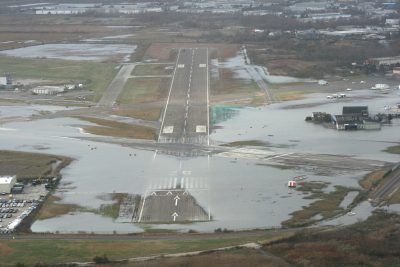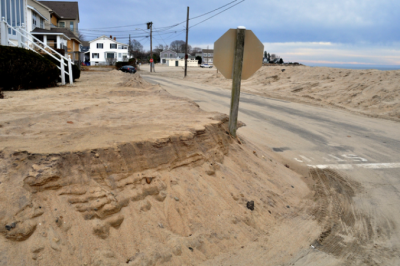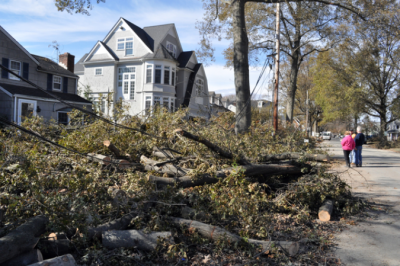Ten years ago the reality of stronger storms, climate change, and sea level rise arrived on our shore with Super Storm Sandy. The storm damaged approximately 3,000 homes in the state and knocked out power to over 600,000 customers. It was reported that the Town of Madison had the highest recorded wind speed in Connecticut at over 80 miles per hour and gauges at Bridgeport and New Haven both measured a storm surge over 9 feet, causing extensive flooding in many shoreline towns. The resulting damage cost Connecticut over $350 million and exposed weaknesses in our preparedness to extreme weather and coastal flooding.
The storm prompted wide concern about our vulnerability to the consequences of climate change and severe weather and marked the beginning of a rapid expansion of climate-change informed planning across Connecticut with both mitigation and adaptation actions. In the decade that followed, local and state agencies, academic institutions, and organizations around the state have mobilized more resources and capacity to address the issue of climate change. To highlight these efforts, UConn’s Connecticut Institute for Resilience & Climate Adaptation (CIRCA) in partnership with CT Department of Housing (DOH) and CT Department of Energy and Environmental Protection (DEEP) hosted an event on October 28th at the Avery Point campus’ Branford House to mark this ten year anniversary – Super Storm Sandy in Connecticut: Progress & Challenges After Ten Years
“Much has been done since Super Storm Sandy, but we are at best only at the end of the beginning,” says CIRCA’s Executive Director Jim O’Donnell. “The transition to a resilient and equitable society and economy will require at least three or four more decades of creative planning and investment. A safe and vibrant future for Connecticut depends on a both emissions reductions to limit climate change and its impacts, and locally appropriate adaptation and resilience actions to enhance public safety and the societal infrastructure that can sustain economic competitiveness.”
At the event state leaders, including Senator Blumenthal, DEEP Commissioner Dykes, and DOH Deputy Commissioner Hanks, highlighted Connecticut’s progress and challenges to address the increasing threats of climate change in the ten years since this memorable storm. In addition, DOH led an overview of federally funded Community Development Block Grant projects, including highlights from CIRCA’s Resilient Connecticut and the City of New Haven’s resilience focused projects. A poster session also provided examples of state-wide programs and broad capacity building implemented during this time. The event raised awareness of the progress that we have made as a state and highlight what remains to be done as climate challenges intensify in the decades ahead.
Materials are now available as links from the Sandy Anniversary web page – these include a video of the event, presentations, and posters.


